Lowlife’s decide it would be fun to push cyclist over from a moving vehicle.
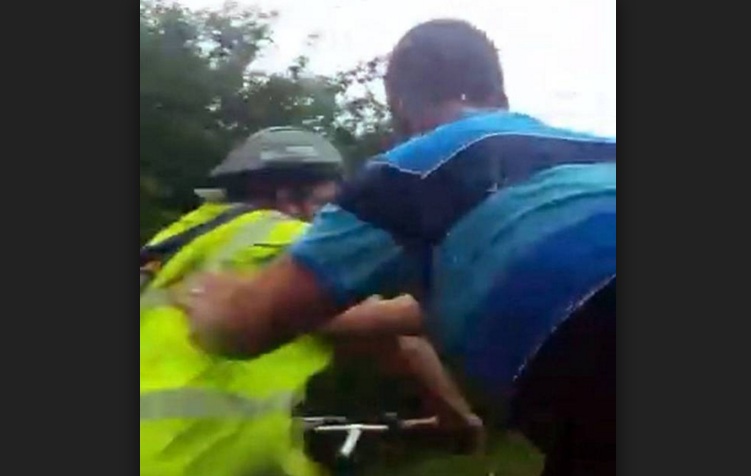
I Love Bicycling is a website that is geared towards cycling for beginners with road cycling tips, training articles, nutrition tips, weight loss, how to’s and bike repair articles.
by Lee Agur
Lowlife’s decide it would be fun to push cyclist over from a moving vehicle.

by Wade Shaddy
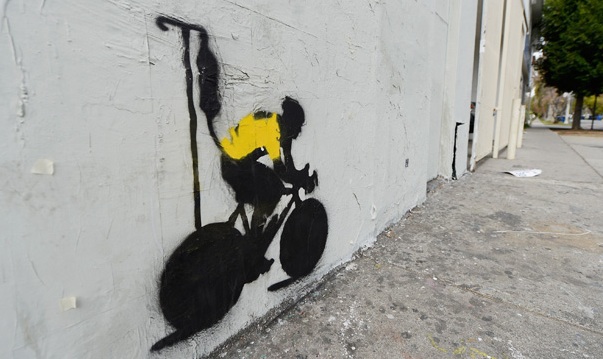
Testosterone doping — it’s not always what you think. Doping is a misleading term. It can prolong your cycling career, sex life, help you stay trim, and make your bones stronger. If you meet certain criteria, you’re a candidate for testosterone therapy, sometimes also referred to as doping in professional cycling.
Low T is an abbreviation for low testosterone. Testosterone is a hormone. It’s what makes a man a man. It’s what puts hair on your chest. It keeps your muscles and bones strong. It’s the force behind your sex drive. As a cyclist it can help you drop the pack, climb that steep hill with ease, or go beyond your normal distance quota.
Low T typically affects middle-aged men. It’s a normal effect of aging. Symptoms may include depression, poor sex drive, erectile dysfunction, impotence, or loss of sleep — all common symptoms of aging. By the time men reach 30, testosterone production decreases at an average of about 1 per cent per year. It’s not surprising that muscle mass also decreases at about the same rate. Other common symptoms of Low T can include diabetes, and hypogonadism, which means that your gonads aren’t doing what they’re supposed to do.
It’s almost a double-edged sword: rigorous cycling with Low T can increase your testosterone consumption, and cause testosterone to go even lower. This can cause serious bone loss, increasing fatigue and decreasing endurance.
It’s been more or less proven that testosterone therapy works to improve cycling abilities — just look at Lance Armstrong and Floyd Landis. Its unfortunate as well, because both of them would have probably held their own without it. But nonetheless, the use of testosterone has been associated with their performance, and it’s at least partly responsible for the bad press concerning testosterone.
So it’s been established that testosterone therapy can help you to win races, climb steep hills, drop everyone on a group ride, or go above and beyond your normal capabilities — but don’t run out and get it yet.
Testosterone is forbidden in amateur and professional bike racing, as well as intercollegiate sports, Olympic competitions, etc.. It’s rigorously controlled in athletic events by the United States Anti-Doping Agency and the World Anti-Doping Agency. But cycling’s doping agencies rarely test amateurs for one obvious reason: They’re amateurs. They compete for hundreds of dollars, not millions.
Testosterone therapy won’t turn a screen-loving blob into an elite athlete. But if you’re suffering from low testosterone, bringing your natural testosterone up to normal levels can help you to be a better cyclist. You’re considered a candidate for testosterone therapy if you already have low levels of the natural hormone—when judged by doctors.
Aside from the obvious cycling benefits, testosterone therapy can help you lose abdominal fat, grow a better beard, give you a confidence boost, do wonders for your pride, and boost your self image. And last but not least, make your erections stiffer, and your libido stronger.
Be aware that testosterone also has a dark side. It’s reputed side effects include shrinking testicles and body acne, among other things. It can build red blood cells in your body, making your blood more viscous (thicker.) It can make you grow man boobs. Men who have cancer should not receive testosterone treatment.
Sociologists and psychologists agree that testosterone and behavior are linked, although the connections aren’t fully understood. You might get edgy, and small things can really tick you off, resulting in foul language and cursing.
The main concern a few years ago, was men over 50 using testosterone therapy ran an increased risk of prostate cancer. Although studies report that testosterone can stimulate cancer cells, most recent studies have debunked the hypothesis that cancer is somehow a direct result of increased testosterone. In fact, recent research suggests that undergoing treatment for Low T could reduce the risk of prostate cancer. In light of both studies, its wise to get your PSA, prostate-specific-antigen, tested along with your T-level. This test tells the doctor if you might be a candidate for further prostate cancer screening. Don’t skip this important test if you’re over 40, talk to your doctor about it.
It can be determined by almost any general physician in his office, your family doctor can do it. The doctor will order a specific blood test to determine your testosterone level. But the determination also depends on what doctor you see, whose opinions vary as to what “low” means. The determination depends on how old you are, and other related medical conditions. Most capable doctors will want to rule out any such possible explanations for symptoms before blaming them on low testosterone. A low score does not always translate to symptoms.
If you do indeed have low T, and you and your doctor decide to go with treatment, there are some options. Some doctors testify that testosterone injections are the best option. Given every few weeks, once a week or once a month. If you don’t mind needles, you can do this yourself and save money, the doctor can show you how. Cyclists should note that taking the shot in your upper buttocks is best — it won’t make you sore in the saddle.
Another option is the gel patch or solution. Because they are applied on a regular and frequent basis, these treatments keep a man’s testosterone at a steady level. If you are using testosterone gel, be careful not to expose other people to the gel. Another option is implantable testosterone pellets, a relatively new form of treatment in which pellets are placed under the skin of the buttocks, where they release testosterone over the course of about three to four months.
To sum it up, testosterone treatment is out there if you need it, and qualify for it. It will help you as a cyclist, but should be used only if you doctor OKs it, and you get regular follow up. If you have issues with other medical related conditions, they should be treated by a specialist.
Don’t take the decision to use testosterone lightly. Testosterone therapy should be a personal choice between you and your doctor, and your wife — she’ll likely say go for it. Some men are fine with low t, and show no symptoms. One important thing worth noting: Once you decide to go with testosterone therapy, you’ll likely need to use it for the rest of your life.
by Wade Shaddy
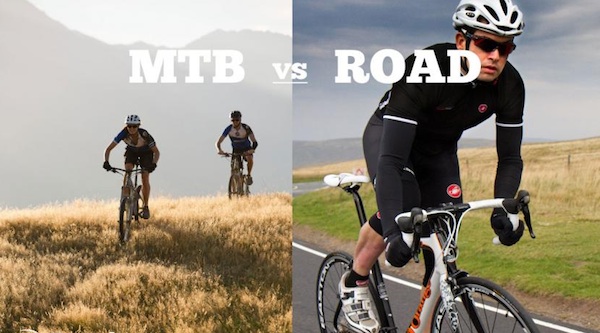 Cyclists just love bikes, period. It doesn’t matter if one has fat tires, and one has skinny tires. It’s counterproductive to avoid either one. Road biking helps mountain bikers build endurance. Roadies can benefit from the technical skills gained from mountain biking. The sharing of knowledge and skills between both disciplines is beneficial to all cyclists. But what are the differences; they’re all over the place, ranging from fashion to attitude, body shape to grooming, just to name a few.
Cyclists just love bikes, period. It doesn’t matter if one has fat tires, and one has skinny tires. It’s counterproductive to avoid either one. Road biking helps mountain bikers build endurance. Roadies can benefit from the technical skills gained from mountain biking. The sharing of knowledge and skills between both disciplines is beneficial to all cyclists. But what are the differences; they’re all over the place, ranging from fashion to attitude, body shape to grooming, just to name a few.
If you’ve spent any time at bike races, bike shows or even watched cycling events on television, you’ve noticed a few basic roadie versus mt. biker fashion differences.
Mountain bikers are more extreme than roadies. The baggy shorts and different types of shirts or jerseys — often emblazoned with soda or energy drink logos — characterize mountain biker fashion. Body armor is sometimes present adorning shoulders and knees, and full-face helmets, which are actually more prevalent in downhill.
The typical road cycling enthusiast prefers tight gear. Lycra shorts are a given, with black being the most popular. Baggy shorts are considered flappy, and excessive. Jerseys are cycling specific, more consistent, cut and fit to hug the body. The logos are often based around cycling products and sponsors. More fashion oriented than mountain bikers, roadies prefer designer sunglasses over full-face helmets.
The fashion differences between mountain bikers and roadies is not happenstance. The fact is, mountain bikers don’t need to be as aerodynamic as roadies. If you see a mountain biker wearing a t-shirt instead of a jersey, it’s because they can get away with it.
Road riders spend hours in the saddle, and back pockets on cycling jerseys store enough goods to keep riding. Roadies also need the extra gear; medicinal and spare parts come in handy miles from home. Mountain bikers are fine with any kind of shirt, pockets or not.
The difference in shorts is somewhat controversial. Some mountain bikers testify that baggy shorts are cooler, and more comfortable. Others say that baggy shorts allow your genitalia to be more free, that the constant restraint from Lycra is uncomfortable, and prevents the necessary adjustment to the family jewels. The constant standing, sitting and swerving of mountain biking requires a more flexible approach. And the fact that baggy shorts typically have numerous pockets is a plus as well.
Lycra shorts have padding. Baggy shorts do not typically have padding. Road riders sit for hours in the same position. The padded front on Lycra shorts cushions the genitalia better. Mountain bikers stand and sit, stand and sit, stand and sit, over and over again. You would think the padding would come in handy, but mountain bikers still prefer the option to allow the family jewels to move around. Mountain bikers swear that baggy shorts are more durable than Lycra, and that snagging a stick with baggy shorts isn’t as likely to tear as Lycra.
If you’ve watched or participated in any mountain bike races, you’ve probably noticed that some mountain bikers have Lycra on underneath the baggy shorts. Go figure. So maybe all the talk about family jewels is just that, talk, and it’s a fashion thing after all. Personal preference is what it’s all about, you can wear anything you like, but you’re more likely to see mountain bikers wearing Lycra than a roadie wearing baggy shorts.
Roadies typically prefer clean shaven faces, or neatly trimmed goatees. Mountain bikers just don’t care, and stubble, scraggly beards and long hair is considered normal.
Taste is a personal thing, it’s just inherent to your nature. But if you’re a mountain biker, you’ll drive four hours to ride for just one hour. Mountain bikers prefer the BBQ to the fancy restaurant, or the movies to the art gallery.
Road cycling is steeped in tradition. Almost every aspect of road cycling from equipment to clothing to hand signals, is governed by rules. Some of them have evolved out of necessity, and some of them are simply tradition for tradition’s sake. But because of all the rigidity in road biking, the roadie is often mis-diagnosed as fastidious, snotty and aloof. The aloof appearance could be a natural expression of the fastidious expression of rules. Roadies may not even acknowledge you, or don’t even appear to know you exist at times.
Mountain bikers seem to actually enjoy what they’re doing. The vocabulary and persona of the mountain biker has a decidedly more modern, western vibe than the roadie’s old-world, European sensibility. Mountain bikers refer to a ride as, “gnarly,” “flowing,” “cool” or “nasty.” They get “stoked.”
The cleanliness of the roadie is the complete opposite of the mt. biker. They’re not afraid to get splattered with mud, and go out of their way to find it. Serious roadies won’t be caught with so much as a speck on their bikes. Mountain bikes are often so caked with debris that you can’t even recognize a derailleur from a stick. Mountain bikers are more inclusive to strangers and may mingle with roadies.
If unadorned by tell-tale clothing, body shapes can also be a dead give-away. Roadies are typically lean and skinny. Mountain bikers are husky. The constant mashing of uphill climbs makes mountain biker calves bulge. The constant pedaling of road biking makes for longer calves.
Look for scars from surgery on mountain bikers, who tend to break bones more often. Road rash scars are typically more prevalent on roadies.
Cycling is a lifestyle that shouldn’t be isolated into camps. If you love two wheels, there’s something in there for both disciplines. Unfortunately it’s like politics. You come down on one side depending on your upbringing. But there’s no reason to stay there. Get out there and enjoy them both.
There are two main ways to learning and becoming a good all-around cyclist: learning from others and reading. Combining both is going to teach you the most in the shortest amount of time. With cycling there is so much to know that an entire career can be dedicated toward learning the in’s and out’s and what works best. Fortunately a number of top cycling coaches in the industry have put together their own books to help guide you toward getting the most out of your cycling. Even if you have the world’s greatest coach no one is going to know better than you how you feel and how your body responds to training, recovery, and all the other things that go into improving your cycling. Knowing more of the “science” behind training and why you should do things a certain way will help guide you in creating your own training plan as well as fine tuning it even if someone else is coaching you. All of these books below are great resources to bettering your cycling. They all are a bit different in their approach so finding the best one for you and your cycling is key.
Price: $11 – $19
When a title has the word “Bible” in it, you know it must be good and encompass nearly everything you would need to know surrounding that topic. This book has it all on the training side of things. It is a bit more “science-y” and goes into a good bit of detail on why you should do things a certain way.
It includes how to set-out and create a year-round training plan that can be curtailed to your events as well as the areas that need work. It also includes what you need to do to optimize recovery including parts in nutrition as well as managing your body and injuries. As with any book of this nature, you probably won’t sit down and read it cover to cover but after you read the parts that you’re most interested in you will constantly flip back to it to consult on current issues or questions. This is a book that you will find on many cyclist’s book shelves as it’s worth its weight.
Price: $11 – $16
This book is much less detailed than that of The Cyclist’s Training Bible as it gives you what you need to do to get in shape in a short amount of time. This is for the rider who neither has enough time to ride and train to the degree that they would like nor has enough time to read a lengthy book.
There are many approaches to getting faster as a cyclist and this takes the approach of interval training which gives you the most “bang for your buck” for time. It includes a number of exact training plans that you can follow to get the most out of your riding. It also includes tips on nutrition and strength training to better your cycling from multiple perspectives.
Price: $18
If you’re also getting into road racing specifically this book is your go to and is great in conjunction with The Cyclist’s Training Bible if you want a bit more detail on the ‘why’. It gives a bit of training advice but not to the same degree as the other two above. It has a larger focus around the racing and preparation itself including equipment, clothing, skills, nutrition, as well as tactics and etiquette in a race. It may seem a bit dated with the cover but the in’s and out’s don’t change, plus they have newer editions. This book can be used as a reference but you will get the most benefit if you sit down and read it cover to cover regardless if you’re looking to get into racing or already started and are finding some things a bit frustrating such as tactics.
Price: $11 – $14
Hunter Allen and Andy Coggan, PhD have completely revised the book that made power meters understandable for amateur and professional cyclists and triathletes.
Power meters have become essential tools for competitive cyclists and triathletes. No training tool can unlock as much speed and endurance as a power meter–for those who understand how to interpret their data. A power meter displays and records exactly how much energy a cyclist expends, which lends unprecedented insight into that rider’s abilities and fitness. With the proper baseline data, a cyclist can use a power meter to determine race strategy, pacing, and tactics.
Training and Racing with a Power Meter makes it possible to exploit the incredible usefulness of the power meter by explaining how to profile strengths and weaknesses, measure fitness and fatigue, optimize workouts, time race readiness, and race using power. This new edition:
Training and Racing with a Power Meter, will continue to be the definitive guide to the most important training tool ever developed for endurance sports.
All of these books will be incredibly helpful in your cycling endeavors. You can find them, as with anything these days, online, but they’re also probably in your local bookshop and/or bike shop. Also, since they are such great books, a lot of cyclists get them when they first start out and graduate from them and then they sit on their bookshelf untouched for years. Ask around your local cycling community if anyone has any of these that you could borrow or any ones like them as there are many. Read one, or all, and learn how to get the most out of your riding. There’s a lot more to training and racing than you ever would imagine and these books are great starting points.
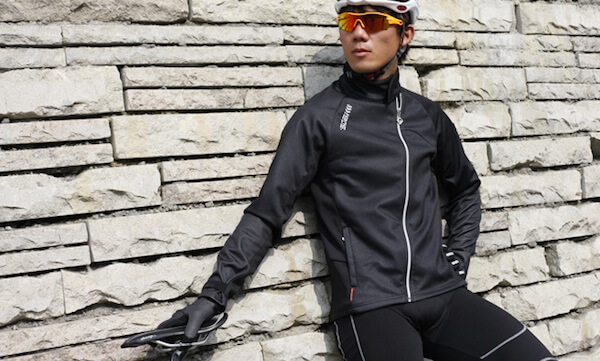 In many parts of the country, the mercury dips south to some large extremes bringing snow and the potential for miserable riding conditions. With the proper winter cycling clothes however, that misery can be curbed into a ride that may not be as comfortable as summer but more than pleasantly bearable. The key is the right clothing for the right temperatures as well as the ability to dress in layers that can be put on or taken off depending upon conditions.
In many parts of the country, the mercury dips south to some large extremes bringing snow and the potential for miserable riding conditions. With the proper winter cycling clothes however, that misery can be curbed into a ride that may not be as comfortable as summer but more than pleasantly bearable. The key is the right clothing for the right temperatures as well as the ability to dress in layers that can be put on or taken off depending upon conditions.
The biggest determiner in what you wear is going to be temperature. Particularly in winter, the temperature can vary a great deal from early morning, throughout the afternoon, and into the evening. The best way to ride in varying temperatures is to have layers such as a vest and wind jacket that you can put on and stuff in your pockets when it warms up.
When it’s cold, precipitation is a much bigger factor and needs to be respected. If it’s raining, you not only need a rain jacket that keeps you dry but also shoe covers and gloves that don’t soak through. If it’s snowing however, the moisture won’t soak through to you so as long as the roads aren’t bad the snow can actually keep you dryer.
The clothing you wear will range from lighter long-sleeved jerseys to thermal jackets depending on how cold it is. In general, wear a bit more than you think you need and then take layers off as needed.
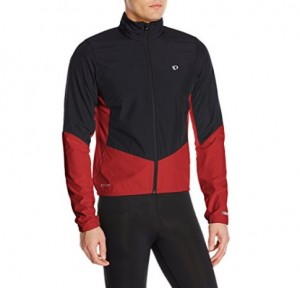 A thermal jacket is going to be the first thing on your winter clothing list. A good thermal jacket is going to be water resistant and be lined with insulating material such as fleece. With a good thermal jacket you can ride in temperatures down into the 30’s and 20’s with no more than a thin base layer and a vest.
A thermal jacket is going to be the first thing on your winter clothing list. A good thermal jacket is going to be water resistant and be lined with insulating material such as fleece. With a good thermal jacket you can ride in temperatures down into the 30’s and 20’s with no more than a thin base layer and a vest.
Thermal Cycling Jacket I wear.
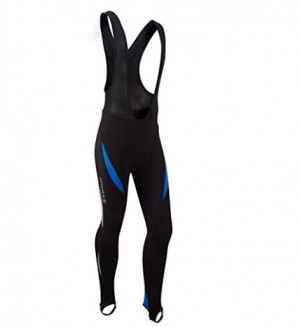 Thermal bibs are full length tights with a chamois that are insulated to keep you warm, dry, as well as comfortable. A good pair will also have zippers on the ankles to easily take off and put on. Since chamois are much more personal, getting a new pair is advised as they will also last a long time.
Thermal bibs are full length tights with a chamois that are insulated to keep you warm, dry, as well as comfortable. A good pair will also have zippers on the ankles to easily take off and put on. Since chamois are much more personal, getting a new pair is advised as they will also last a long time.
Some great inexpensive Thermal Bibs.
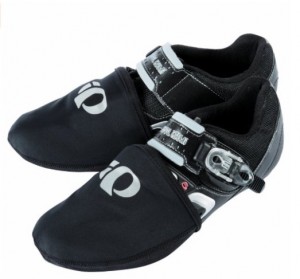 Probably the most difficult part of the body to keep warm is the feet. Thermal shoe covers will not only keep the wind off your toes but also keep them dry. In general, the thicker the better and if one pair isn’t warm enough for you, find another larger shoe cover to layer over the top.
Probably the most difficult part of the body to keep warm is the feet. Thermal shoe covers will not only keep the wind off your toes but also keep them dry. In general, the thicker the better and if one pair isn’t warm enough for you, find another larger shoe cover to layer over the top.
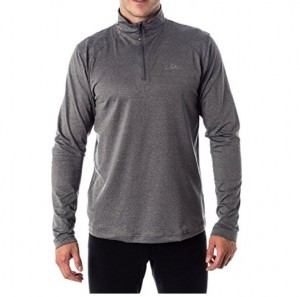 A good base layer is going to keep your core warm while wicking sweat away from your skin. This is particularly important for winter riding because at some point you are going to sweat underneath your thermal jacket, particularly up a climb. If you remain soaking wet you are going to become chilled very quickly.
A good base layer is going to keep your core warm while wicking sweat away from your skin. This is particularly important for winter riding because at some point you are going to sweat underneath your thermal jacket, particularly up a climb. If you remain soaking wet you are going to become chilled very quickly.
My favourite long-sleeved base layer for winter riding. (I have 2)
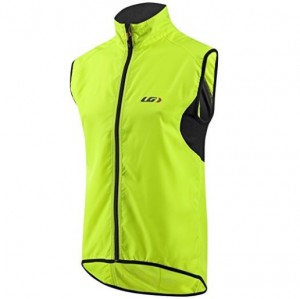 A vest is an imperative layer that can easily be put on or removed depending upon temperature as well as riding terrain such as up or down a hill. A good vest is going to be wind proof. They make winter vests that are insulated but these are much harder to stuff into a pocket when it gets warm.
A vest is an imperative layer that can easily be put on or removed depending upon temperature as well as riding terrain such as up or down a hill. A good vest is going to be wind proof. They make winter vests that are insulated but these are much harder to stuff into a pocket when it gets warm.
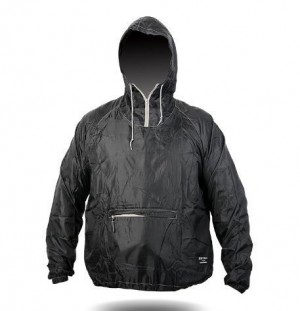 In addition to a vest is a thin, lightweight wind/rain jacket. In general, this stays in your back pocket for times when you desperately need it. You may be at a good temperature while riding but as soon as you stop, say for a flat tire or otherwise, you are going to lose heat quickly. Having a long sleeve jacket that you can put on quickly can be a lifesaver. And don’t wait until you get cold, put it on right away to preserve the heat you still have. This is also a good piece of clothing to quickly put on before a long descent to keep your warm.
In addition to a vest is a thin, lightweight wind/rain jacket. In general, this stays in your back pocket for times when you desperately need it. You may be at a good temperature while riding but as soon as you stop, say for a flat tire or otherwise, you are going to lose heat quickly. Having a long sleeve jacket that you can put on quickly can be a lifesaver. And don’t wait until you get cold, put it on right away to preserve the heat you still have. This is also a good piece of clothing to quickly put on before a long descent to keep your warm.
Inexpensive rain jacket to have on hand.
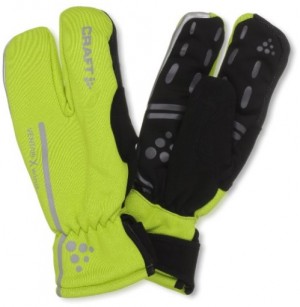 Second to your feet, your hands are going to be challenging to keep warm. As the temperature drops from the 40’s into the 30’s and below, gloves are going to have an increasingly difficult time keeping your hands warm. The first alternative is lobster gloves which are a cross between gloves and mittens with three fingers making shifting a bit easier. After these comes mittens which may look a bit odd on the bike but if they’re keeping you warm, who cares. Getting a pair that are both wind and waterproof will serve you good. The one issue that these can bring is that they can get pretty warm on climbs. A good way to avoid this is to take them off and stuff them up the front of your thermal jersey and take out a thin pair of gloves from your pocket and put them on for the climb.
Second to your feet, your hands are going to be challenging to keep warm. As the temperature drops from the 40’s into the 30’s and below, gloves are going to have an increasingly difficult time keeping your hands warm. The first alternative is lobster gloves which are a cross between gloves and mittens with three fingers making shifting a bit easier. After these comes mittens which may look a bit odd on the bike but if they’re keeping you warm, who cares. Getting a pair that are both wind and waterproof will serve you good. The one issue that these can bring is that they can get pretty warm on climbs. A good way to avoid this is to take them off and stuff them up the front of your thermal jersey and take out a thin pair of gloves from your pocket and put them on for the climb.
Winter Cycling Gloves – The Lobster.
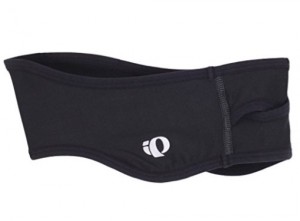 Headwear can be particularly tricky under a helmet as you want something thick and warm while still being small enough to fit under your helmet. Tightknit winter hats that can be pulled down far enough to cover your ears are a good option as long as it’s not snowing or raining. When precipitation comes, having a bill on your hat can pay large dividends in keeping the rain and snow out of your eyes. Finding a warm winter hat with a bill can solve this problem as well as wearing a cycling cap with an insulated headband.
Headwear can be particularly tricky under a helmet as you want something thick and warm while still being small enough to fit under your helmet. Tightknit winter hats that can be pulled down far enough to cover your ears are a good option as long as it’s not snowing or raining. When precipitation comes, having a bill on your hat can pay large dividends in keeping the rain and snow out of your eyes. Finding a warm winter hat with a bill can solve this problem as well as wearing a cycling cap with an insulated headband.
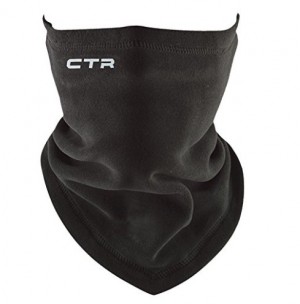 As the temperature dips to the freezing mark and below particularly, keeping your neck covered as well as face when you need it, will make all the difference on a cold, windy ride. You don’t need a super thick one but rather one that can block the wind and keep you warm. One thing to try and avoid is pulling it up over your mouth and nose as when you do your exhalation will get it wet, which will then be cold on your skin as well as have the possibility of freezing.
As the temperature dips to the freezing mark and below particularly, keeping your neck covered as well as face when you need it, will make all the difference on a cold, windy ride. You don’t need a super thick one but rather one that can block the wind and keep you warm. One thing to try and avoid is pulling it up over your mouth and nose as when you do your exhalation will get it wet, which will then be cold on your skin as well as have the possibility of freezing.
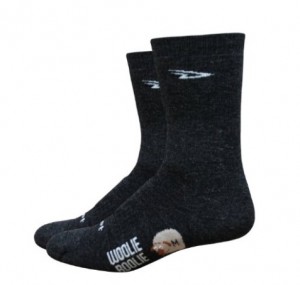 The final piece to keeping warm in the winter is sock choice. You want a sock that will keep your feet warm while wicking sweat away from your skin but the challenge comes in keeping it thin enough as to still fit inside your cycling shoe. Wool socks tend to be the best option for this. Get a pair that is a bit thicker but not so much that you can’t wiggle your toes. The circulation needs to continue unobstructed as that is what is going to keep your feet warm. One added trick is to get a pair of wool socks that come up to your knee as this is going to provide extra insulation on your shins which have the greater potential of getting wet from any wheel spray off your front wheel.
The final piece to keeping warm in the winter is sock choice. You want a sock that will keep your feet warm while wicking sweat away from your skin but the challenge comes in keeping it thin enough as to still fit inside your cycling shoe. Wool socks tend to be the best option for this. Get a pair that is a bit thicker but not so much that you can’t wiggle your toes. The circulation needs to continue unobstructed as that is what is going to keep your feet warm. One added trick is to get a pair of wool socks that come up to your knee as this is going to provide extra insulation on your shins which have the greater potential of getting wet from any wheel spray off your front wheel.
Nice warm wool cycling socks for winter riding.
Now that you know what all to get to ride in the cold, wearing the right things at the right time is going to be the challenging part. Typically when you leave on a ride you should be slightly chilled for the first ten minutes until you warm up from the effort. You should have on what you plan on wearing for the entire ride. Generally a good way to do it is to wear a long sleeve jersey when the temperature is above 40 degrees with a vest. When the temperature dips below 40 degrees F. wear the thermal jacket as well as a vest when it gets closer to 30. In both situations always keep your wind/rain jacket in your pocket for when you really need it.
With the proper winter cycling clothes, a bit of knowhow, and some trial and error, you’ll be able to comfortably ride in practically any weather lengthening your riding season to as long as you want, as long as the roads don’t have too much snow that is.
by U.M.
When it comes to style and panache, few can argue that Italian-made clothing is usually right at the top of the list. This is as true for cycling jerseys as it is for any other type of clothing, which is why Italian cycling jerseys have become so desirable amongst many cyclists today.
It’s not just style that you’ve got to look out for. A good cycling jersey will also offer all of the practical benefits that you need to perform at the top of your game when you go out for a ride. Luckily, every jersey on this list fits that bill exactly and offers everything that you could be looking for from an Italian cycling jersey.
2013 Monton Italia Flag Men’s Long Sleeve Jersey
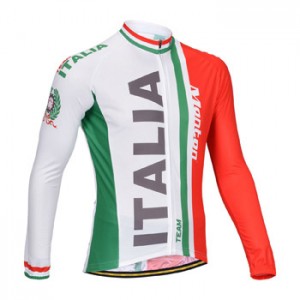
Price: $39.99
This gorgeous jersey is a design from 2013 and has been created to be as soft and flexible as possible, allowing you the maximum amount of movement when you are cycling. This is one of the more comfortable Italian cycling jerseys around and is also made using a breathable mesh material, so you can be sure that your skin stays cool on the hottest rides. The material also allows for efficient wicking of moisture away from your body, meaning you can stay cool and moisture free at all times.
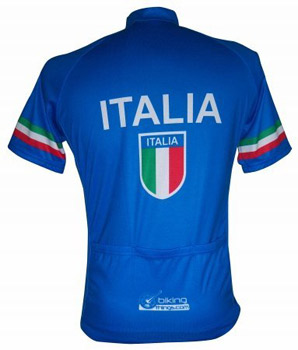
Price: $61.90
It’s simple, stylish and reflects everything that you need to know about Italian cycling. This jersey is a wonderful choice for those who want to look great while they ride while also getting all of the advantages that Italian cycling jerseys are known for. Featuring a skin-tight design that allows for added support and flexibility in your ride, this jersey is affordable and will ensure you catch the eye of everybody you cycle past.
Formaggio 1968 Retro Mens Cycling Jersey
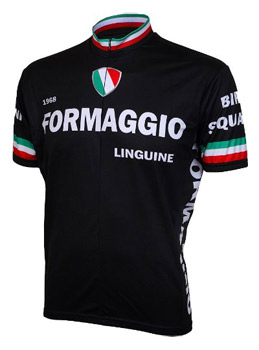
Price: $52
If you want to go a little old-school with your jersey then there are few better choices than this wonderful Formaggio top. The design is based on the jerseys created by Formaggio back in 1968, meaning it offers a different look to most of the other Italian cycling jerseys on this list. It is also made using 100% polyester and features three rear pockets, so you can store whatever you need when you head out for a ride. Couple that with an elastic waist and cuffs and you have one of the most practical and comfortable Italian cycling jerseys on the market.
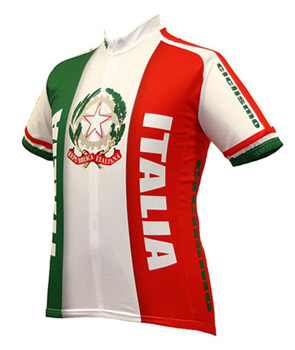
Price: $34.95
This American-designed jersey still maintains all of the core qualities of a good Italian cycling jersey and has a design that will leave little doubt as to which country you support when you are riding. It is made using a Euromesh technical fabric that is ideal for keeping you cool during warmer days and is able to wick sweat away from your body for additional comfort. It also features a hidden zipper and a trio of rear pockets, making it as practical as it is stylish.
BDI Men’s Italy Cycling Jersey
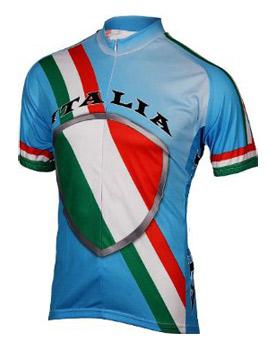
Price: $60
This beautiful, short-sleeved jersey is perfect for those who want to get out in the blazing sun and still feel comfortable while they are riding. It is made using 100% DrySport polyester wicking fabric, which has been specially designed to keep your body dry at all points during your ride. This cool design is supported with three rear pockets for storage and elastic waist and cuffs, making your comfort the highest priority. The gorgeous design only adds to the package, making this one of the best Italian cycling jerseys around.
by Lee Agur
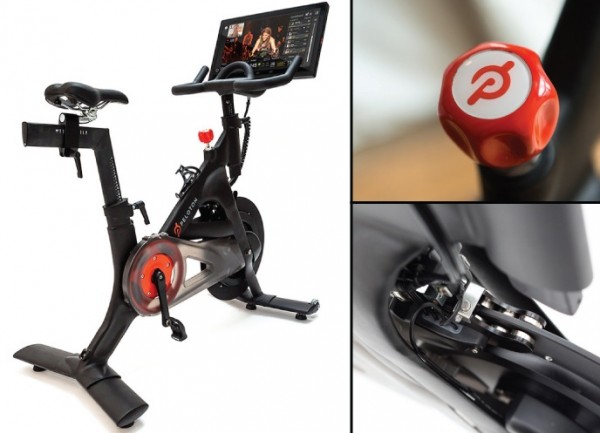 When people talk about a new gadget, it usually has something to do with wearables that have a pedometer or a new smartphone that can track a person’s heart rate. This new fitness machine, however, shows that gym equipment isn’t necessarily an archaic piece of technology, as there’s an instrument now that elevates workouts through interactive cycling classes.
When people talk about a new gadget, it usually has something to do with wearables that have a pedometer or a new smartphone that can track a person’s heart rate. This new fitness machine, however, shows that gym equipment isn’t necessarily an archaic piece of technology, as there’s an instrument now that elevates workouts through interactive cycling classes.
The Peloton Cycle is a top-of-the-line exercise machine for those who want take advantage of technology while exercising. As the title suggests, it has an interesting twist to the traditional bike, and its training regimen can be quite addicting and encouraging to fitness workouts. The Peloton Cycle allows people to stream live or play in-demand cycling classes straight through the machine’s 21.5-inch Android waterproof touchscreen. This means that if your trainer catches you slacking off, he or she can spew words of encouragement to keep your legs moving, wherever you are in the world.
Apart from the interactive classes, the Peloton Cycle monitors a user’s burned calories, distance traveled, and pedaling rate. There’s also a leaderboard in order to motivate users to get themselves into the top 10, or beat an exercise buddy who’s also using a Peloton Cycle.
While the Peloton Bike is an interesting piece of kit, this piece of high-tech machinery comes with a hefty price tag. The bike and monitor cost $1,995, and a $39 per month subscription is needed to stream the cycling classes.
Perhaps people would consider this product more if its Android monitor offered games. Right now, the screen has no use apart from watching classes, which is a shame because some stationary bikes use casual games such as poker, slot machines, or black jack to help people pass the time while exercising. Gaming Realms, a software giant based in the UK that hosts a number of games through its proprietary website, says that online game sales are expected to hit over $40 billion this year. Perhaps the makers of the Peloton Bike should’ve considered tapping into the popularity of video and online games for their product to reach a wider audience.
If you can afford it, however, there’s no harm in trying out this equipment. Peloton Cycles looks top-of-the-line, and their online cycling instructors seem to know their stuff.
by Lee Agur
I’ve fulfilled one of my dream trips of a lifetime: cycling down Maui’s Haleakala Volcano. And to make the trip even more memorable and special, I did this adventure trek at sunrise!
I joined a group of thrill seekers with Cruiser Phil’s Volcano Riders for this unique, exhilarating experience. We were driven (at 2:15 am!) to their shop, where we were given a continental breakfast, including some black Hawaiian coffee to wake us up, while the bikes were loaded into a trailer, and then we were driven in a van, with the loaded trailer, all the way to the summit of Haleakala via the steep, winding, twisting mountain road. We arrived at our destination in the dark, so there was very little use of looking at ‘the scenery’ on this ascent, and we assembled at the summit by 5 am, in anticipation of that day’s scheduled 5:40 am sunrise.
“Haleakala” means “House of the Sun”, and I find it difficult to find the right words to convey to you the special feeling that I had to be on that summit, at a height of over 10,000 feet, in the stark blackness of the night – and then to witness those first rays of light in the sky as the sun was about to emerge – and then to see the sudden bursting forth of that bright yellow ball of light! It was awesome!
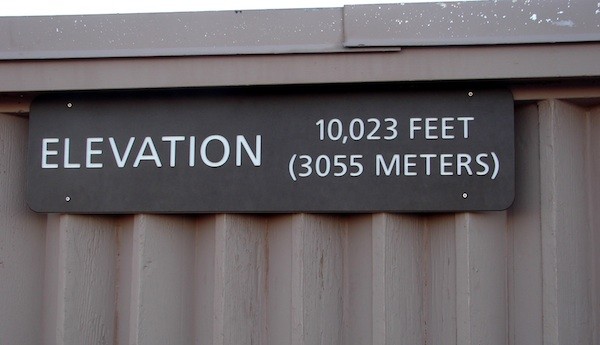
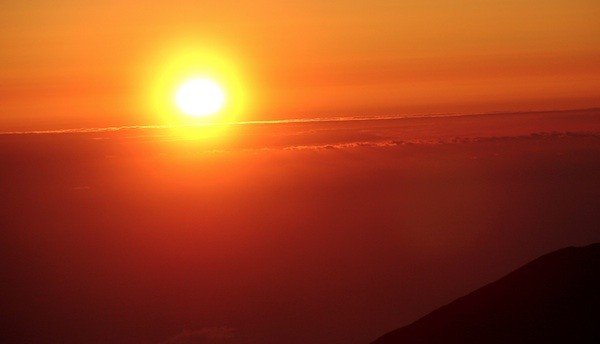
I was soon able to take photos deep into the volcano, for it was as if a vast number of stadium lights had suddenly been switched on – and it was, indeed, bright! In just a few minutes of actual elapsed time, it felt as if I had gone from night time to noon!
Standing on Haleakala’s summit, in the wee hours of the morning, brought to light another reality of the situation: it was windy and cold! We were bundled up in vests, weather-proof parkas, and gloves, and we needed all of these items. However, as time passed, and we began our descent by bike, it was certainly necessary to stop and strip layers of clothing along the way. By the time we reached our destination far below, we were actually sweating! Yes, it’s quite an extreme temperature change!
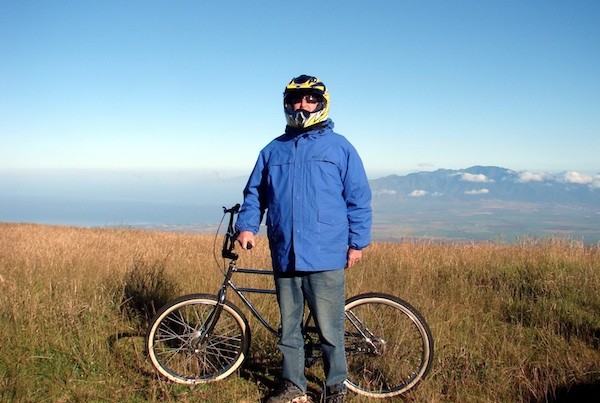
Our cycling leader was Jay, and he led the way down. No one was allowed to pass him, and this controlled our speed. He used hand signals so that we knew when we had to cling to the edge of the road (because of approaching traffic) and when we could use the centre of the road, too (because the road was then clear, and it was certainly safer on those sharp curves). He had us ride in single file, and he had us stop for several photo ops (another way to control our speed). Our driver, Josh, followed us down in the van, and these two were in constant radio contact (for greater safety). At each stop, we could go to the van and retrieve our cameras, but we weren’t allowed to carry them during the actual descent (yet another safety precaution).
An older couple followed the cycling group down the mountain, as passengers in the van with Josh, and they were able to get a photo of me on the actual descent. Riding right behind me was their grandson! This couple (from Oregon) had decided that they’d reward each of their grandchildren, upon graduation, with a week’s vacation in Maui, and this particular grandson had specifically requested to “bike down the volcano” – so here he was!
Several companies offer escorted tours by bike down Haleakala. Cruiser Phil’s is one of these, and they’ll provide round trip transportation from your condo or hotel, good bikes (with lowered seats ,for greater stability), and other top equipment, including warm clothes, gloves, and full face helmets. You may feel as if you’re dressed for a space shuttle when you begin your two-wheeled descent!
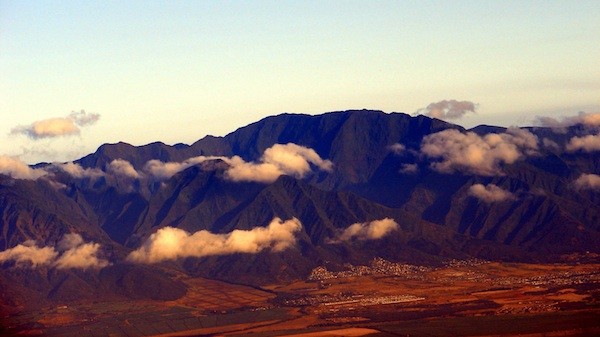
The bike trip is very well organized and quite safe – if you follow the leader’s instructions. However, not everyone always does, and there have been some very serious accidents, even deaths. After all, you’re basically going down a treacherous mountain road, for about 40 kilometres, with more than 30 very sharp, challenging hairpin turns – some without protective guardrails. I loved it!
For More Information: www.cruiserphil.com; toll free phone: 1-877-764-2453
by Lee Agur
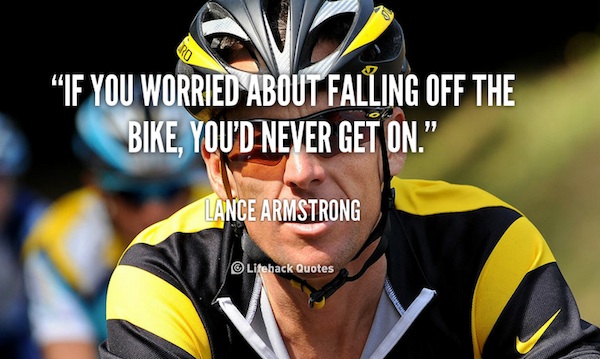
July 1999: “I have been on my deathbed, and I’m not stupid. I can emphatically say I am not on drugs.”
Dec 2000: “We are completely innocent. We run a very clean and professional team that has been singled out due to our success … Before this ordeal I had never heard of [the performance-enhancing drug Actovegin].”
Jan 2001: “The simple truth is that we outwork everyone. But when you perform at a higher level in a race, you get questions about doping.”
Jan 2004: “I have never had a single positive doping test, and I do not take performance-enhancing drugs.”
July 2004: “We’re sick and tired of these allegations and we’re going to do everything we can to fight them. They’re absolutely untrue.”
Aug 2005: “I have never doped. I can say it again, but I’ve said it for seven years.”
Aug 2005: “Why would I enter into a sport and then dope myself up and risk my life again? That’s crazy. I would never do that. No way.”
Nov 2005: “How many times do I have to say it? … Well, it can’t be any clearer than ‘I’ve never taken drugs.'”
July 2010: “As long as I live, I will deny it. There was absolutely no way I forced people, encouraged people, told people, helped people, facilitated. Absolutely not. One hundred percent.”
Jan 2011: “If you’re trying to hide something, you wouldn’t keep getting away with it for 10 years. Nobody is that clever.”
May 2011: “Twenty-plus-year career, 500 drug controls worldwide, in and out of competition. Never a failed test. I rest my case.”
June 2012: “I have never doped … I have competed as an endurance athlete for 25 years with no spike in performance, passed more than 500 drug tests and never failed one.”
Jan 2013: “All the fault and all the blame here falls on me. I viewed this situation as one big lie that I repeated a lot of times. I made my decisions. They are my mistakes, and I am sitting here today to acknowledge that and to say I’m sorry for that.”
by Lee Agur
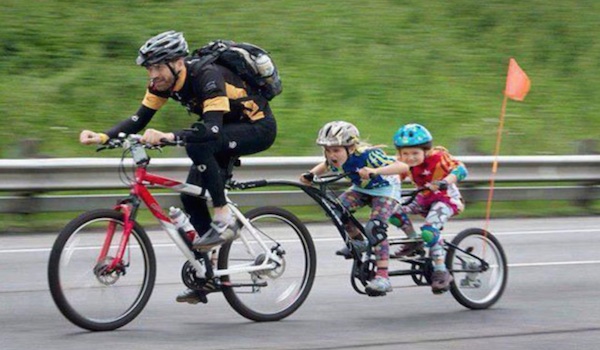
The WeeRide Co-Pilot is just the thing for a child who wants to tag along with Mommy or Daddy, but doesn’t have the legs for it. It gives you the control of steering and braking while keeping you child engaged while they pedal to help you along, or just coast and enjoy the scenery. Either way it’s fun for both of you. Sturdy construction – just like a regular 20-inch bicycle with regular handlebars, seat, and pedals. Attaches easily and quickly to almost any bicycle with a seatpost, and folds up for storage when not in use. And it even comes with a safety flag to alert motorists. This tag along bike is great for the whole family, nothing says togetherness like a family bike ride.
Tag along bikes are great for teaching your child how to ride a bike if they are not already familiar.